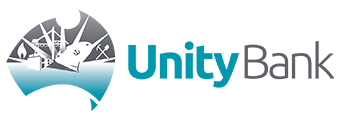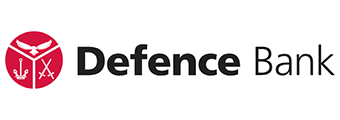
- Source of Funds: Credit cards provide access to a line of credit for purchases, allowing users to borrow money, whereas debit cards use existing funds directly from the user's bank account.
- Interest and Fees: Credit cards often involve interest charges and additional fees (like annual and late payment fees), while debit cards usually have lower fees and no interest charges.
- Credit Building: Using a credit card can impact a user's credit history, but debit card use does not generally influence credit scores.
- Rewards and Protections: Credit cards typically offer more rewards (like cashback and travel perks) and comprehensive fraud protection. Debit cards may offer fewer rewards and have less extensive protection features.
Debit and credit cards offer a fast and convenient way to pay for goods and services in place of cash or cheque. They can be used to make purchases online, over the phone, or in person via electronic funds transfer at point of sale (EFTPOS) terminals.
Their similarities also extend to their physical features. Both come with a 16-digit card number (though some manufacturers may use 14 to 19 digits) that you provide when making purchases, an EMV chip and magnetic stripe (magstripe) that contain your information, a three-digit CVV security code, and an expiry date.
Both debit and credit cards are linked to a processing network such as American Express, Visa, or Mastercard, allowing them to be used anywhere cards in those networks are accepted.
But it doesn’t mean these cards should be used interchangeably. Because of their distinct features, one can be more advantageous to use than the other depending on various factors. Knowing which one to tap or swipe lies in understanding how credit and debit cards work.
|
Credit card |
Debit card |
|
|
Fund source |
Money borrowed from your credit line determined by the card issuer. |
Money in the bank account linked to your card. |
|
Interest and fees |
A purchase rate is charged on money borrowed using a credit card for purchases that fall outside of the interest-free period. Some fees credit card holders pay annual fees, cash advance fees, late payment fees, over-limit fees, and international transaction fees. |
No annual fees or additional charges when withdrawing from the bank’s ATM. An overdraft fee may apply if you pay for a purchase that exceeds the amount in your linked bank account. |
|
Credit history |
You can establish a good credit history by making on-time payments and spending within your means. Applying for a credit card is akin to applying for a loan. A lender will assess your credit history before approving your application. |
You can’t build a credit history because you are using your own money to pay for purchases. Applications can be completed in minutes and you can add your card to your digital wallet near instantly in many cases, with a physical card arriving in the mail days later. |
|
Rewards and perks |
You can earn rewards in the form of cashback or points for every spend. Credit cards might offer complimentary travel insurance, airline lounge access, and other travel perks. |
Some debit cards may offer a one-off cash bonus, waived fees, and points or cashback for every spend. Some debit cards might waive international transaction and ATM fees. |
|
Fraud protection |
Card issuers monitor transactions to identify any suspicious activity using your credit card. |
Banks also offer purchase protection for any fraudulent transaction; the key is to immediately report any suspicious activity that occurred. |
|
Warranty and purchase protection |
An additional warranty may apply on items bought using a credit card. Credit cards might also offer purchase protection for lost or stolen items, and price protection for goods bought at higher prices. |
Some debit cards may offer purchase protection on items bought using the card. |
What is a credit card and how it works
Issued by a financial institution, a credit card enables users to borrow money against a credit line to make purchases. The maximum amount of funds a cardholder can access depends on the credit limit extended by their card issuer.
All purchases made using the credit card within a statement period – typically 30 days – are recorded in the monthly credit card statement. Cardholders agree to pay the money they spent on or before the payment due date.
Card issuers charge interest on the money you borrow, which you can prevent from accruing if you pay in full within the interest-free period (from the beginning of the statement period until the payment due date).
For example, if your credit card’s statement period begins on 5 March for a 30-day billing cycle, all transactions processed from 5 March to 4 April will be reflected on your March statement date. Say your credit issuer gives you 25 days to settle your payment, it means you’ll have until 29 April to pay off your closing balance.
Many credit cards have interest-free periods of 55 days, but some are shorter or longer – it pays to check.
Essentially, using a credit card provides you with the flexibility to borrow money now and pay it back later. It’s particularly advantageous if you need more time to pay for purchases or an unplanned expense arises.
They can also be useful in case you need to pay a refundable deposit on a hotel or rental car – your funds might be frozen, and rather than use your own money, you can use the credit card company’s.
Types of credit cards
There are different types of credit cards available and each comes with distinct perks and features, so it’s important you choose the one that suits your needs and lifestyle.
-
Low or no fee credit cards are straightforward cards that simply extend a line of credit to users for making purchases, cash advances, and balance transfers. This type of credit card often has low to no ongoing fees (annual fee or monthly fee). These can be useful if you want something sitting in your wallet to use in case of emergencies.
-
Balance transfer credit cards have low introductory interest rates and sometimes 0% fees on balance transfers to allow users to move high-interest debt from one account to another. This can be useful for debt consolidation or if you want to roll multiple balances into one.
-
Low rate credit cards offer low to no interest for a limited time or for the life of the card. These can be useful if you think you might not be able to pay off the statement in full before the interest-free period expires.
-
Rewards credit cards let cardholders earn rewards points, cashback, or statement credits on every spend, depending on reward structures. This type of card charges 0 to more than $100 in annual fees. Common products include the Coles Mastercard.
-
Frequent flyer credit cards allow users to earn frequent flyer points on eligible spending. These accrued points can be used to pay for flights and snag first class seats. Common programs and cards include Qantas and Virgin Velocity cards.
-
Premium or platinum credit cards are top-of-the-range cards with exclusive perks such as travel credits and insurance, lounge passes, concierge services, and higher point earnings. Because of their premium offerings, these types of cards often charge higher annual fees. They often come with high salary requirements, and some, such as the Amex Black Card, are invitation-only.
| [Ascent Premium ] | 0 | [Receive a welcome bonus of 150, 000 Membership Rewards points when you apply online by 25 June 2024, are approved, and meet the minimum spend criteria of $5, 000 in the first 3 months. Available to new Card Members only. Receive a $450 Platinum Travel Credit each year, which can be redeemed for eligible flights, hotels, car hire or unique experiences. Transfer your points to a choice of 10 major Airline Reward Partner Programs including Qantas Frequent Flyer and Velocity Frequent Flyer Complimentary access for you and a guest to over 1, 400 Airport lounges across 140 countries and counting. Complimentary domestic and overseas travel insurance. Smartphone Screen Insurance for up to $500 for screen repairs to your Smartphone when you pay for your smartphone with your Platinum Card, either outright or on a monthly contract., ] | 0 | 0 | 20 | $product[$field["value"]] | 0 | AMEX | More details | ||||
Disclosure | |||||||||||||
American Express Platinum CardDisclosure
| |||||||||||||
| N/A | 0 | [Minimum credit limit : $1, 000 Card replacement fee (Australia) : $15 Apple Pay, Google Pay, Samsung Pay, ] | 0 | 0 | 15 | $product[$field["value"]] | 15.49 | Visa | More details | ||||
Disclosure | |||||||||||||
Unity Bank Low Rate Visa Credit CardDisclosure
| |||||||||||||
| N/A | 0 | [Low ongoing variable interest rate 0% p.a. on balance transfers for 12 months. Same ongoing rate for retail purchases, cash advances and balance transfers Up to 55 days interest free. Additional card available for $0. Minimum credit limit $500 Low annual fee of $40. Half the annual fee ($20) donated to the McGrath Foundation every year you hold the card. Choose a credit limit from as little as $500 and up to $15, 000. Access to the worldwide Visa network. Replacement of Visa card (within Australia) $12.50 Replacement of a Visa Card (overseas) $55 Apple Pay, Android Pay, Google Pay, Samsung Pay, ] | 0 | 0 | 25 | $product[$field["value"]] | 8.99 | Visa | More details | ||||
Disclosure | |||||||||||||
Community First Bank Low Rate Pink Credit CardDisclosure
| |||||||||||||
| N/A | 0 | [3.99% p.a. 6 month introductory rate on balance transfers, purchases and cash advances. 8.99% p.a. ongoing rate on purchases and cash advances. Up to 55 days interest free on purchases. Half of the $45 annual fee is donated to the Defence Bank Foundation and goes towards providing specially-trained assistance dogs to veterans living with post-traumatic stress disorder (PTSD). Minimum credit limit. $1, 000.00 Visa cards reported lost or stolen overseas- Foreign currency conversion fee, percentage of value of transaction. - Emergency overseas Visa replacement fee. US$175 - Emergency overseas Visa cash advance fee. US$175 Apple Pay, Google Pay, Samsung Pay , ] | 0 | 0 | 20 | $product[$field["value"]] | 8.99 | Visa | More details | ||||
Disclosure | |||||||||||||
Defence Bank Foundation Credit CardDisclosure
| |||||||||||||
| N/A | 0 | [Low ongoing variable interest rate 0% p.a. on balance transfers for 12 months* Same ongoing rate for retail purchases, cash advances and balance transfers Up to 55 days interest free. Additional card available for $0. Low annual fee of $40. Half the annual fee ($20) donated to the McGrath Foundation every year you hold the card. Choose a credit limit from as little as $500 and up to $15, 000. Access to the worldwide Visa network. Replacement of Visa card (within Australia) $12.50 Replacement of a Visa Card (overseas) $55 Apple Pay, Google Pay, Samsung Pay, ] | 0 | 0 | 25 | $product[$field["value"]] | 8.99 | Visa | More details | ||||
Disclosure | |||||||||||||
Community First Bank Low Rate Blue Credit CardDisclosure
| |||||||||||||
| N/A | 0 | [Overseas ATM withdrawal: $5 Minimum credit limit $1, 000 Maximum credit limit: $25, 000 Annual fee waived for the first year, ] | 0 | 0 | 15 | $product[$field["value"]] | 12.99 | Visa | More details | ||||
Disclosure | |||||||||||||
MOVE Bank Low Rate Credit CardDisclosure
| |||||||||||||
What is a debit card and how it works
Debit cards are issued by banks to customers who hold chequing or savings accounts with them. Basically, they are used to access the funds – via an ATM or by making purchases – in the account to which it’s linked.
Therefore, whenever you’re using your debit card to pay for goods and services like how you do with credit cards, you are drawing funds instantly and directly from your linked account.
You do not have a debt to repay because you are accessing the money you already have, and, as such, the limit to the amount you can take depends on how much is in your account. An exception to this is if you have an overdraw or overdraft facility, which can come with fees and interest to pay.
Debit cards have a unique personal identification number (PIN) that you must punch in on the ATM keypad when withdrawing funds or the merchant’s EFTPOS terminal when making purchases. In online transactions, you may be asked for your card’s validation code or CVV before payment pushes through for security purposes.
Are eftpos cards the same as debit cards?
Generally, eftpos cards are similar to debit cards, in that both can be used for contactless payments using the funds in their linked bank accounts without drawing on any form of credit.
However, since eftpos is an Australian payment system running only on networks based in the country, it cannot be used overseas. Further, eftpos cards cannot pay for online and over-the-phone purchases like debit cards as they require an EFTPOS terminal to process transactions.
Debit cards, on the other hand, can process both eftpos payments and international schemes like Visa or Mastercard through a dual-network system.
Most cards in Australia these days use both the eftpos and a Mastercard/Visa network. It likely doesn’t make a difference to you, the shopper, but retailers are charged different fees depending on how their payment infrastructure is set up.
What are the differences between a credit card and a debit card?
Fund source
Credit cards finance purchases by borrowing against a credit line with a preset limit. Card issuers determine a person’s credit limit based on their creditworthiness or ability to pay back the money they owe. Some cards may come with a minimum and maximum credit limit.
Lenders may look at your credit score, employment status and income, loan repayment history (if there’s any), and how often you’ve applied for credit to ascertain your level of risk. Cardholders considered low-risk are offered higher limits, while lower limits are imposed on riskier borrowers or for customers using barebones, low-interest cards.
Meanwhile, debit cards draw on funds in the chequing or savings account where they are linked. You are not borrowing because you use the money you already have to finance your purchases.
The limit to the amount you can access through your debit card depends on how much money is deposited in your linked bank account.
Interest and fees
Whenever you're using a credit card to pay for purchases, you are essentially taking out a short-term loan. As such, credit issuers charge you interest for borrowing money, typically expressed as annual percentage rate (APR), otherwise known as a purchase rate.
APR is the interest rate charged for borrowing on a credit-based product such as loans and credit cards. It represents the actual yearly cost of the loan, which includes the headline interest rate and additional fees. A lower APR means you will pay less in interest and charges. If your card has a variable APR, it can change at any point, usually in line with RBA rate movements.
RBA data indicates the average credit card interest rate is north of 17% p.a. This is quite high and is much higher than rates seen on home loans and car loans. To avoid paying and possibly racking up interest on your card, you must pay your bill in full each month within the interest-free period or payment window.
Many credit issuers also charge an annual fee, which varies depending on the type of credit card. Typically, cards with more features and premium perks such as rewards points and travel insurance yield a higher annual fee.
Withdrawing cash or transferring funds from your credit card will also be charged a cash advance fee at the time you make the transaction. On top of this, you’ll also be charged interest on your cash advance from the day of the transaction until the day you pay it off. The interest rate is likely higher than the purchase rate.
Failure to pay off your balance or at least the minimum payment will incur a late payment fee. Meanwhile, international transaction fees are charged on credit card transactions overseas unless your product waives these. If you go over your credit limit you might be charged an over-limit fee.
In contrast, debit cards don’t charge annual fees and fees for withdrawing cash at your bank’s ATM. Some debit cards also waive international transaction and ATM fees.
However, you may be charged an overdraft fee and debit interest if you make a transaction that exceeds the amount in your linked bank account. To avoid being charged, you must ensure you have enough cleared funds to cover your payments.
Building credit history
Every transaction made using credit cards is reflected on the cardholder’s credit report. Responsible use of your card – such as making on-time payments and maintaining low credit utilization ratios – can build a positive history and raise your credit score. On the other hand, negative records such as late payments and delinquencies could hurt your credit score.
It’s always advantageous to establish a solid credit history as people with high credit scores are more likely to be approved for loans or secure a lower interest rate. However second guess your desire to get a credit card just to ‘build your credit score’ as this isn’t as important in Australia, due to comprehensive credit reporting, as it is in other countries.
This opportunity, however, is not available by using a debit card. By using the funds in your linked bank account, there is no way that you can demonstrate your ability to responsibly pay for the money you borrow.
Earning rewards
One of the benefits of using credit cards to pay for purchases is the incentive to earn cashback or points that you can redeem for rewards. Cashback rewards typically have a fixed value, for example, 1 cent for every dollar. Conversely, points may have fluctuating values depending on the card used and the rewards program (e.g. 1 Qantas point for every dollar spent).
The number of points you earn will vary depending on your card and purchase type. Some cards offer boosted points for specific categories such as gas or dining, therefore it’s best to use a card for purchases where it will earn more points. For example, a card that earns x2 on essential items is ideal for grocery purchases.
Debit cards don’t usually offer rewards like most credit cards do. But there are some types of cards such as rewards debit cards that also come with perks. Some of the things you can earn from this type of debit card include a one-off cash bonus when you open a new account, waived fees, and points or cashback for every spend.
Some banks might also collaborate with cashback programs such as Shopback, or offer discounts at retailers if you use their debit card.
Fraud protection
One of the biggest contributors to overall card fraud is card-not-present (CNP) transactions. This usually happens when a credit or debit card is used to pay for online or over-the-phone purchases using captured card details.
Most credit card-issuing institutions have measures in place to protect their users from theft and fraudulent use of their cards. Lenders usually monitor transactions to help them identify suspicious activities (for example, multi-thousand-dollar transactions are suddenly being made in a different location), notify you of potential fraud, and reverse any such charges made using your card.
Banks likewise may offer fraud protection for suspected fraudulent charges on debit cards. However, as it’s your cash, you’ll want to be vigilant too. It’s vital that you immediately report any unauthorised purchases to avoid being liable for some or all losses and to prevent your card from being overdrawn.
To keep your debit or credit card secure, always check your purchases, be careful about sites you open or messages you receive, never share your card details, be wary of your institution calling or emailing you unsolicited asking for your details, and cover your PIN when punching it in at an ATM.
Warranty and purchase protection
Using your credit card to pay for items may get you additional insurance beyond what the brand or retailer offers. For example, if an appliance bought using a credit card becomes defective after the warranty has lapsed, you may check the terms and conditions of your credit issuer to see if it will offer additional coverage.
Many credit cards also have purchase or price protection which helps you replace stolen or lost items and refund price differences if you find the same item you bought is cheaper elsewhere.
Some banks may also offer purchase protection for goods bought using debit cards, particularly those running on major card networks like Mastercard and Visa. The key is to report any suspicious activity immediately so banks can freeze or cancel your account and prevent it from being overdrawn.
Photo by Wayhomestudio on Freepik




